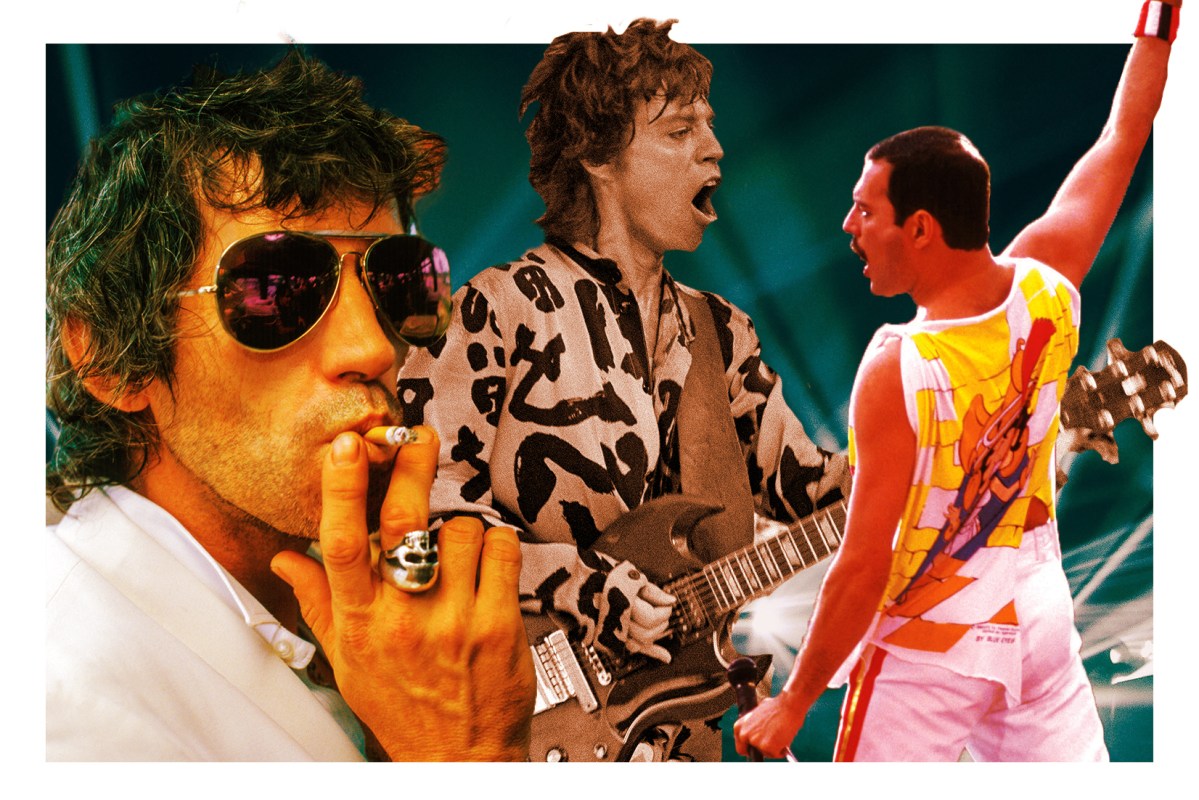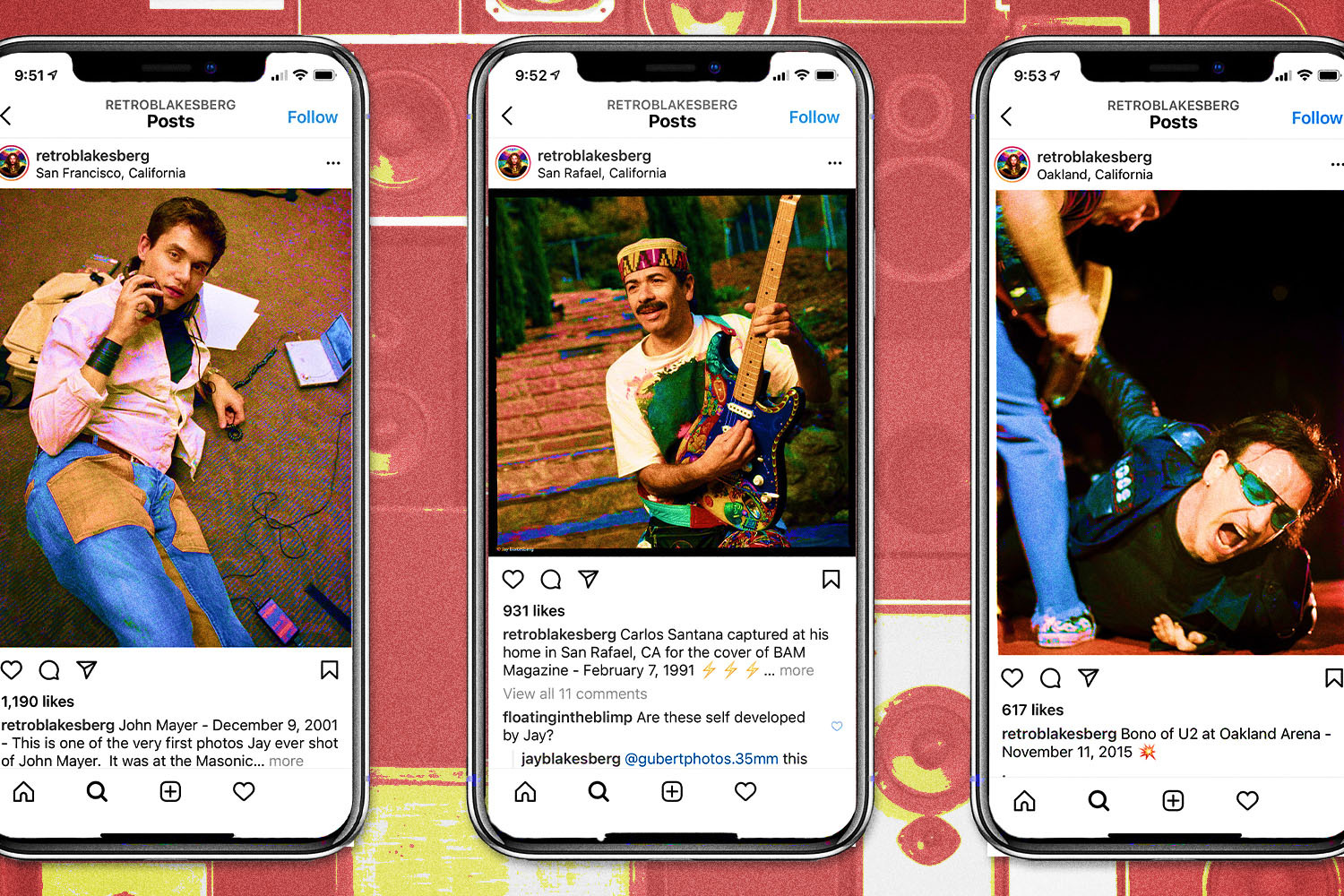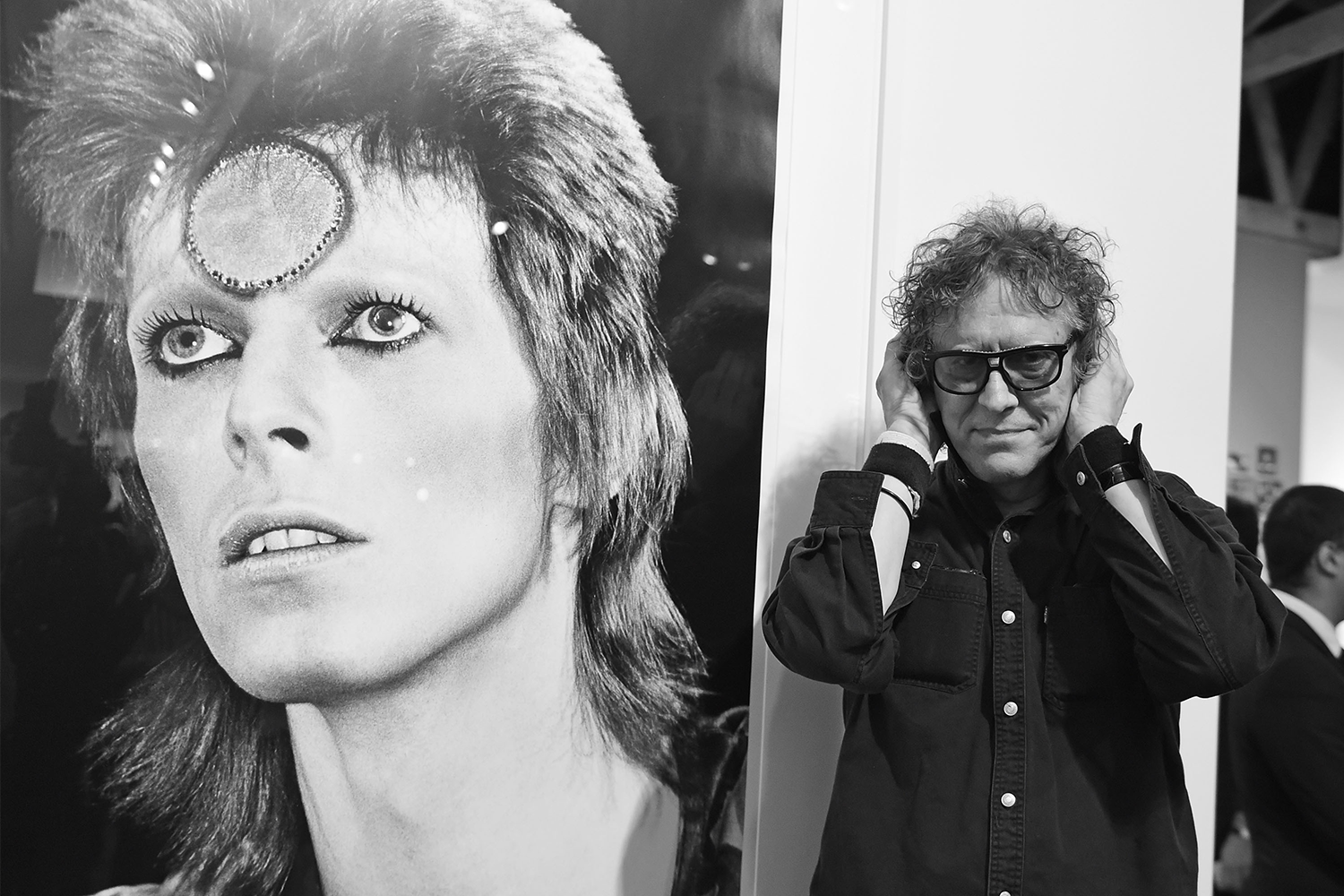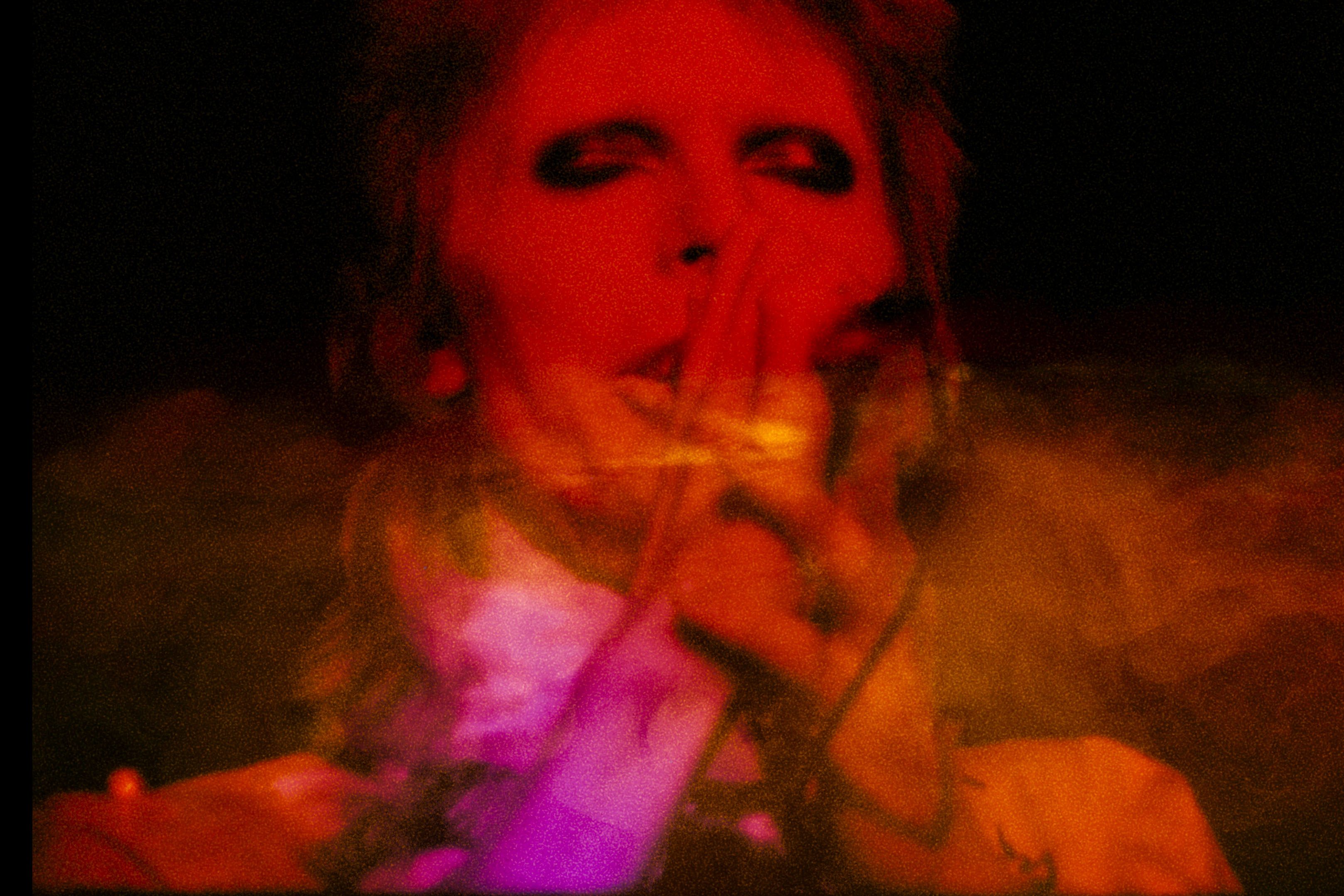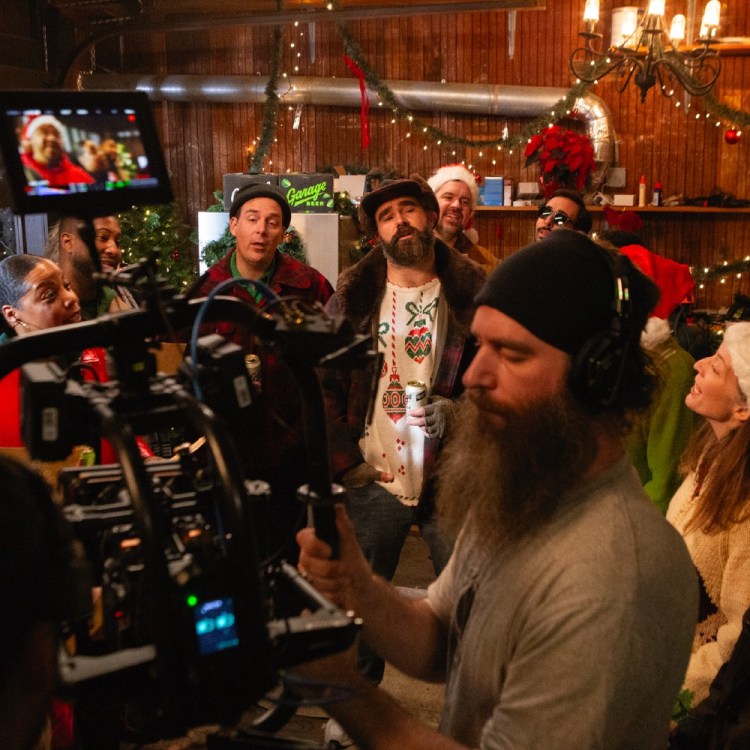Denis O’Regan once found himself having his ear chewed off by Mick Jagger.
“He sat next to me on a long flight and talked solidly the whole time about his house on Mustique, about his ex-wife — whom he never referred to by name,” he recalls. “On another occasion I pitched up at David Bowie’s rehearsals, and for the first few days I’d have to go to the gym every morning with him and his bodyguard. It was only in retrospect that I looked on any of these kinds of meetings you have as auditions, but that’s what they were. They were trying to work out if they could put up with me for months on end.”
That matters because if you’re a global rock star — not just Bowie or The Rolling Stones, but the likes of Queen, KISS, The Who, Blondie or Duran Duran — at some point O’Regan is likely to have been your shadow with a camera. As arguably the world’s leading tour photographer, both of the spectacle of live performance — he was the official photographer at Live Aid — and the more quiet, intimate times in rehearsal or backstage, O’Regan has documented such icons for 50 years.
He has an eye for a good shot, of course. As he notes, when you start out using film, each shot costs you money, and there are only so many rolls you can carry, so pressing the shutter necessarily becomes a discipline, not the unthinking reflex afforded by going digital. He’s learned to override everything his camera wants to do in the face of glaring stadium lights. But, more than that, he’s had to be a good people person.
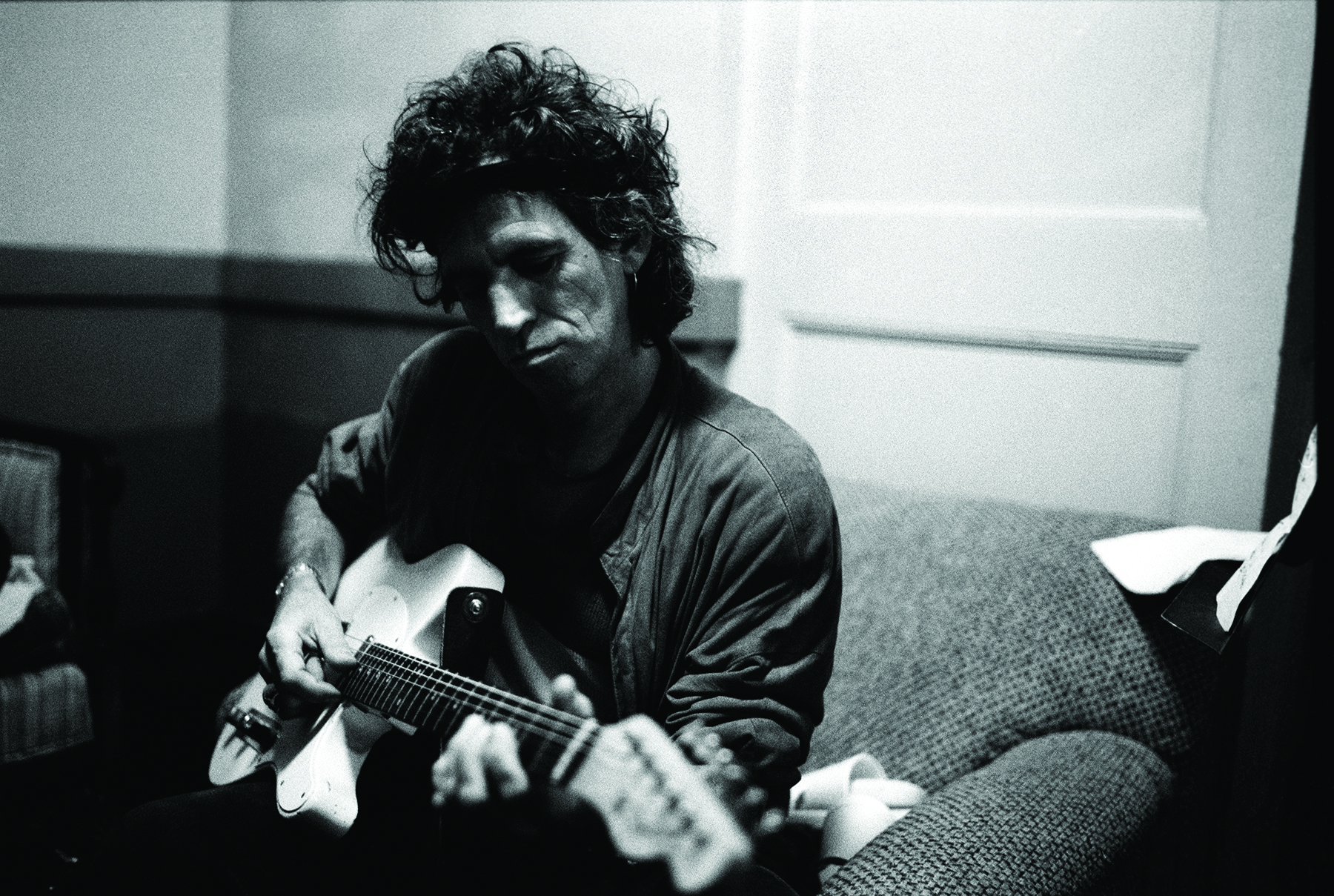
“The cliche of shy people hiding behind the camera is absolutely true in my case. But the thing about these tours is that [as photographer] you have to be trusted and, maybe more importantly, you have to fit in and get on with people,” explains O’Regan, who has a 69-day exhibition at London’s West Contemporary gallery to mark his coming 69th birthday, a release of new prints to raise money for children’s charities and, out next year, a monolith of his work being published. “You can’t constantly be going ‘Mick, Mick, over here, Mick!’ because it drives them insane.”
Nor, he adds, can you afford insensitivity to the psycho-dramas that inevitably unfold over the course of a tour. Being a constant ever-snapping presence makes for “pretty strange kind of relationship” with his subjects anyway — intimate and yet critically distanced. It’s why, maybe, he fluffed his “audition” with Paul McCartney. “I don’t typically get star-struck, but I was just such a huge Beatles fan, so I just wasn’t myself that day,” O’Regan says with a laugh. But then with bands he has to be mindful of shooting each member equally, especially if only one of them made the choice to bring him along.
“It really is kindergarten stuff,” says O’Regan. “There’s a lot of rivalry. So many levels — with even the backing band members getting wound up by my hanging out with the star, traveling in their limo, and so on.” He chuckles. “And then there are all the affairs, the cliques that develop, those who really want to party and those that don’t. It’s a microcosm of society. It can be very intense. By the end you feel like you’ve been away for five years when you’ve only been away for one.”
Not that he would have had it any other way — and not least because being an official tour photographer gave him access to shots that being one of maybe dozens of photographers in “the pit” could never do. Indeed, he says that if he had to list his three passions in order of importance, “sad as it is,” they’d run music, travel and only then photography. What started out as a hobby for an insurance broker — who, thanks to the good timing of punk, found that he no longer needed a press pass or magazine commission to get marketable shots — had become the medium through which O’Regan got to see the best acts perform in the most faraway places.
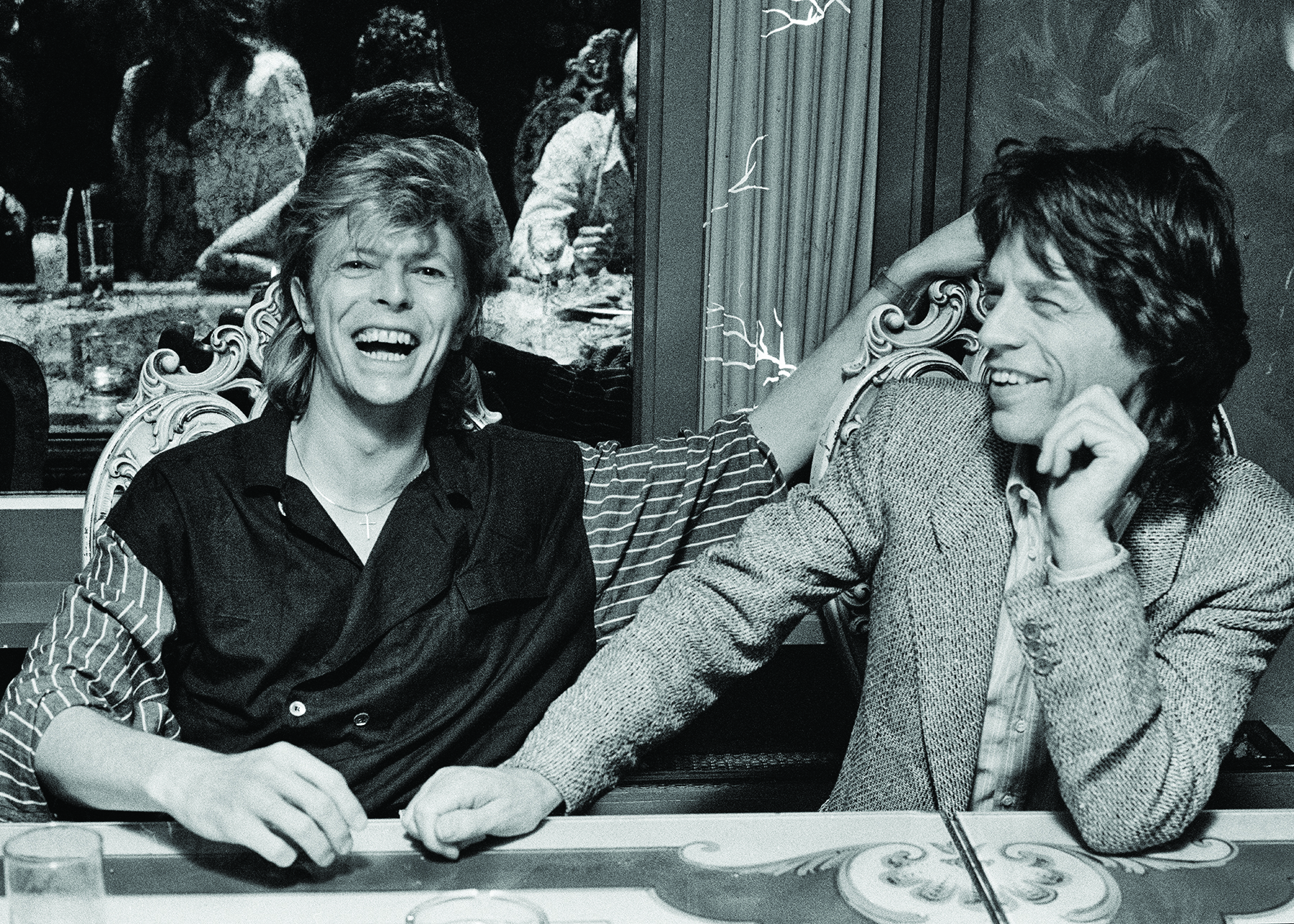
Bowie once told him that rock ’n’ roll was in his blood. O’Regan told him no, he says, “because I didn’t want to seem that shallow. But he was right. I think initially [my enthusiasm] for touring was also because as a young man I was always on the hunt, so it’s useful to be with, say, Duran Duran and 20,000 screaming girls.” He smiles. To be that close to that hair-pulling, eye-rolling, crazed fandom — “the girls just appearing out of nowhere, all the fainting, all that having to sneak out through underground carparks” — but with the luxury “of being able to walk away, while they [the artists] can’t, well, it was just fascinating. But as I got older it became more about getting those special shots,” he says.
And there would good reasons why life on the road was not for everybody: Freddie Mercury would tell him how much he hated it. It could become very repetitive, O’Regan concedes: the same hotels, the routines — “everyone always absolutely hyper after a show, so going to sleep was just impossible and since restaurants were closed all you could do was party,” he recalls. But then, he adds with a wink, “you’re in five star hotels with your own floor, there’s the police escorts, women everywhere…” It could, he further concedes, have been a lot worse.
Besides, it’s not just nostalgia, but O’Regan believes that he got to witness both a moment in history, as the ’70s rock culture of “drugs and wild orgies” shifted to the big business of the ’80s “when it was all about media, lawyers and sponsorship, when artists had contracts and had to turn up, when tours became these gigantic money-making machines,” and also people of historical import, the likes of which he reckons won’t be seen again.
“[Many of my subjects] were pop stars then and now they’re cultural icons. You see how these acts make a transition from superficial pop star, as many people see them, to something much [more profound], especially when they die,” he argues. “And I think there’s a sense now that there will never be another Beatles or David Bowie or Freddie Mercury. They got there first and defined the form, but they also went beyond the norm. The likes of Coldplay and Adele are huge, of course, but [these days] the likes of Instagram has killed the mystique. There’s too much information. The world has shrunk. I think maybe we’re at the end of an era.”
“It helps when the people I shot were all so photogenic,” O’Regan adds. “But I look back and sometimes think if I hadn’t been there all these historic moments — the rise of Ziggy Stardust, for example, or the only time David Bowie and Michael Jackson met — would have been lost. I’m coming up to the age that Bowie died at, so if I live beyond that, great. Seeing the world change — it’s all about survival isn’t it?”
This article appeared in an InsideHook newsletter. Sign up for free to get more on travel, wellness, style, drinking, and culture.
